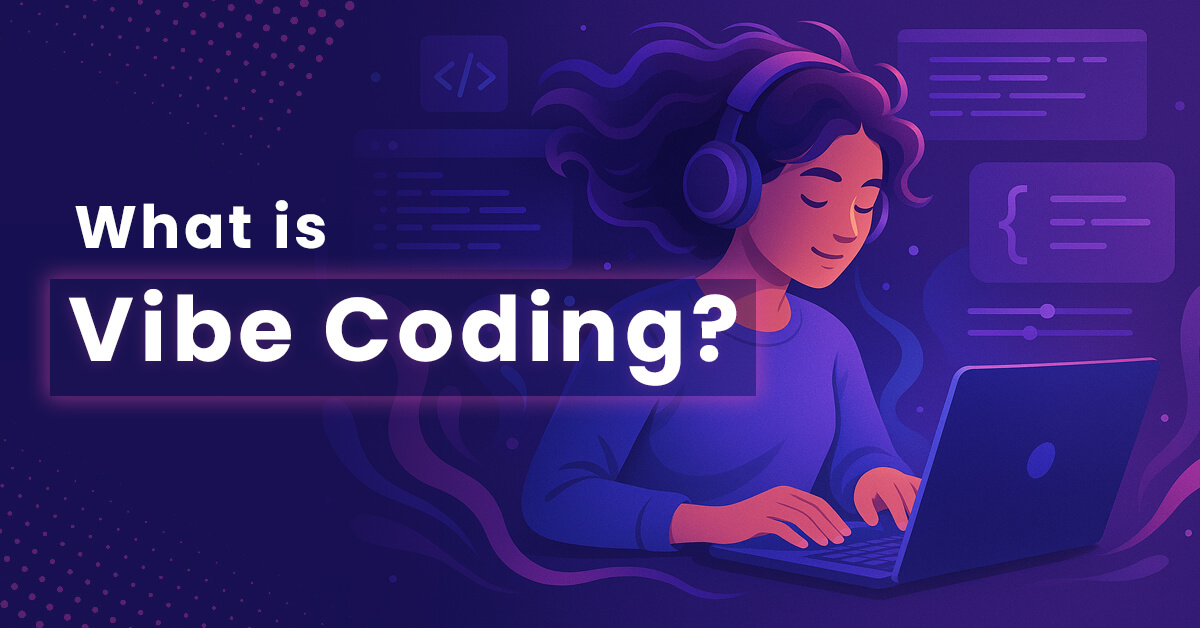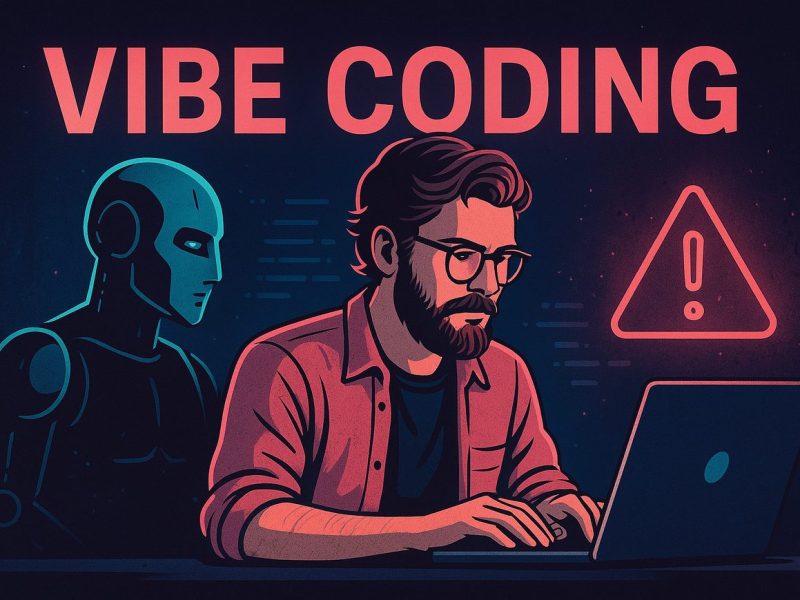The AI-Powered Revolution Transforming Software Development
“The hottest new programming language is English.”
– Andrej Karpathy, 2023
The Genesis of a Paradigm Shift
As a UX designer and solutions architect who’s witnessed 20 years of development evolution, I’ve never seen a shift as radical as vibe coding.
Coined in February 2025 by AI pioneer Andrej Karpathy (former Tesla AI director and OpenAI founding member), this methodology reimagines software creation as a conversational dance between human intention and AI execution.
Unlike traditional programming, vibe coding treats natural language as the primary interface: developers describe goals (e.g., “Build a REST API with JWT authentication”), and AI tools like GitHub Copilot generate executable code in real-time
Why This Matters Now
75% of Replit users never write manual code, yet build functional apps
25% of Y Combinator startups now deploy codebases with 95% AI-generated content
Development cycles for prototypes compressed from weeks to hours
How Vibe Coding Works: The Developer’s New Workflow
Based on my architectural experience, effective vibe coding follows four iterative phases:
Phase 1: Intent Articulation (The “Vibe”)
Developers describe requirements in plain English:
*”Create a responsive dashboard showing real-time sales data with D3.js visualizations and Firebase backend”*
Key principle: Specificity beats syntax. IBM research shows prompts with contextual details (libraries, data sources) yield 68% more accurate outputs.
Phase 2: AI Generation
Tools like Cursor or Windsurf translate prompts into code:
Automatically scaffold file structures
Install dependencies
Generate boilerplate and core logic
Phase 3: Human-in-the-Loop Refinement
Developers review and refine through natural language:
“Make visualizations mobile-responsive and add export to CSV functionality”
This is where UX expertise shines—directing UI/UX enhancements that an AI might overlook.
Phase 4: Testing & Evolution
AI-assisted debugging: Paste error logs into tools like Replit Ghostwriter for automated fixes. Unit tests can be generated via prompts like:
“Write Jest tests for user authentication module”
Essential Vibe Coding Tools: A Solutions Architect’s Toolkit
1. Cursor (VS Code Fork)
Strengths: Agent Mode autonomously creates files/runs commands
UX Advantage: Sidebar chat and diff previews maintain developer control
Perfect for: Full-stack app development
2. Replit AI
Strengths: Browser-based environment with one-click deployment
UX Advantage: Zero-setup for non-coders; 75% of users are programming newcomers
Perfect for: Education and rapid prototyping
3. Lovable.dev
Strengths: Visual UI editing via targeted prompts (e.g., “Change this button color”)
UX Advantage: Real-time collaboration and GitHub sync
Perfect for: UI-heavy applications
4. Tempo Labs
Strengths: Generates PRDs and user flow diagrams alongside code
UX Advantage: Auto-documents architecture decisions
Perfect for: Enterprise teams needing audit trails
Real-World Impact: Beyond Hype
Case Study: MenuGen by Karpathy
Karpathy’s experimental app demonstrated Vibe Coding’s power—and limitations. Prompting AI to:
“Create an app that photographs restaurant menus, translates them, and shows dish images”
yielded a working prototype in hours. However, the code required significant optimization for production use.
Accessibility Revolution
Cambridge study: Beginners built functional apps in 1 hour using vibe coding vs. 3+ months traditionally
DEV Community user: “I write 10% of my code now; AI handles parsers, bots, and Docker configs.”
Critical Challenges: The UX and Security Imperatives
While transformative, vibe coding introduces risks I’ve mitigated in enterprise deployments:
1. The “Human Remainder” Problem
As Medium contributor Ahti Ahde notes:
“AI-generated code often lacks subtext—the undocumented rationale behind architectural decisions”
This creates maintenance nightmares when original developers depart.
Solution: Enforce AI-generated documentation prompts:
“Add inline comments explaining this database schema design logic”
2. Security Vulnerabilities
IBM studies: AI-generated code often misses OWASP best practices (e.g., input sanitization)
Cybernews research: 41% of AI-assisted apps exposed API keys vs. 16% manually coded
Solution: Implement mandatory AI code review steps:
“Check for XSS vulnerabilities in this React component”
3. Flow State Interruptions
Frequent context switching between prompting and reviewing fragments UX focus.
Solution: Use Amp’s CLI to automate testing/deployment, preserving creative flow
The Future: Where Vibe Coding Is Heading
As an architect, I see three seismic shifts coming:
1. Voice-Driven Development
Tools like Cursor already support voice prompts. Karpathy predicts:
“Soon we’ll verbally debug code while walking”
2. AI Agents as Team Members
Projects like Decube demonstrate AI orchestrating entire pipelines:
“Track Snowflake table lineage for this Airflow DAG” → auto-generated metadata graphs
3. The “UX of Intent” Discipline
New design roles will emerge specializing in:
Prompt chaining strategies
AI-output interaction patterns
Context management systems
Conclusion: Augmentation, Not Replacement
Vibe coding isn’t the death of programming—it’s its democratization. As Karpathy emphasizes:
“True creativity and goal alignment remain uniquely human”
For professionals, this means upskilling:
Architecture oversight: Directing AI like an orchestra conductor
Prompt craftsmanship: Mastering descriptive precision
Ethical guardrails: Ensuring secure, maintainable outputs
The most successful developers will become “bilingual”—fluent in both human intention and machine execution. Tools will evolve, but the core truth remains: Technology’s highest purpose is extending human potential. Vibe coding is that promise realized.


